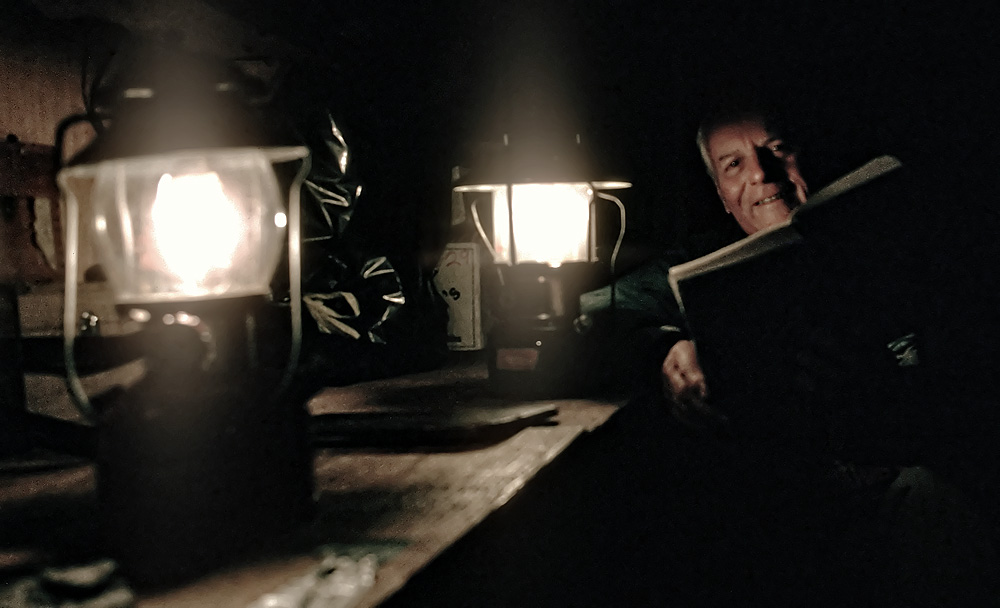"A MAGNIFICENT DESOLATION"- Edwin Aldrin, Apollo 11, July 1969
Although spoken from the surface of the Moon, Edwin Aldrin’s words perfectly capture the essence and experience of the Juneau Icefield. Stretching 90 miles from Juneau, Alaska north to Skagway, the Juneau Icefield is one of the world’s largest non-polar masses of snow and ice. Though seemingly remote and inhospitable, its close proximity to Alaska’s capital city draws tourists, adventurers, students, and scientists to its lush, rain-forest-rimmed perimeter and its barren interior.
Six decades ago, it was the interior of the Icefield that attracted the attention of a young, energetic glaciologist named Maynard Malcolm Miller. As a member of the U.S. Navy during WWII, he was involved in several projects examining the impact of weather and climate on military operations, particularly in the north polar region. In the early 1940’s, and throughout WWII, there was much interest in using the polar ice cap as a base for military operations. But to do so, it was necessary to understand the role of both short-term weather and long-term climate on the formation and stability of the ice pack. Unfortunately, the dynamic nature of the polar ice pack retained a record of only relatively short-term weather events. A longer annual record of weather and climate was needed. Thus it was necessary to find a location where long-term climate changes could be observed.
Members of the first JIRP "high ice" expedition to the Juneau Icefield in the summer of 1948. Left to right: Maynard Miller, W. Laurence Miner, Lowell Chamberlain, Melvin G. Marcus, William A. Latady and Anthony W. Thomas. Photo taken at Camp 4 on "Hades Highway," the upper Twin Glaciers' neve. Photo: FGER Archives
Recognizing that glaciers record hundreds, or even thousands of years of climate events, in 1948 Maynard lead a small group of explorers on a reconnaissance of the Juneau Icefield to investigate its potential for climate research and the feasibility of establishing a long-term glaciological research program. Thus began one of the longest continuous-running programs of its kind in the world. Dedicated to education and science, and now in its 7th decade, the Juneau Icefield Research Program (JIRP) continues to attract students and scientists from around the world.
The program’s success lies partly in its approach to education - learning from Nature, in Nature. This is also the key point of the Emersonian Triangle. In his 1837 oration, The American Scholar, Ralph Waldo Emerson enunciated three primary influences on scholarly development and effectiveness: Nature, Books, and Action. He proposed that Nature is the ultimate arbiter of truth, the source from which knowledge is obtained. Books are the transcript of our accumulated knowledge of Nature. And he believed Action is required of the scholar to investigate Nature, thereby adding to the body of knowledge.
Professor Phil Druker (U. Idaho) enjoys the desolation of the Juneau Icefield, July 2005. Photo: M. J. Beedle
During their two months living on, researching, and traversing the Juneau Icefield, JIRP’s students and scientists are immersed in Nature. They learn from Nature that the Icefield is more than just snow, ice, and rock. They learn it is an integrated, synergistic system of disparate elements acting together to provide clues to, and evidence of, past climate. They learn Nature has a story to tell, and they learn how to decode the secrets of Nature.
One of the key goals of the Juneau Icefield Research Program is to impress upon its students the importance of the Emersonian Triangle, and to continue its long legacy of percipio quo Natura, in Natura (to learn from Nature, in Nature). And what better place to do this than the magnificent desolation of the Juneau Icefield.
Links
ith origins in 1946, JIRP has a great wealth of history. Read more in these select publications:
Exploring the Juneau Ice Cap, by M. M. Miller and W. O. Field, 1951
Juneau Icefield Research Project (1949-1958): A Retrospective, by C. J. Heusser, 2007
The Juneau Icefield Research Program (JIRP), 1946-2008, by C. Connor, 2009
“We bring the student into nature, and that makes all the difference”
A Miller-family legacy:
Beginning at the American Geographical Society in 1946 William Field and Maynard Miller collaborated on the development of JIRP (then the Juneau Icefield Research Project). Following the early years of JIRP in the late-1940s, field research in the 1950s was lead by a host of collaborators, including Calvin Heusser, Art Gilkey, Ed LaChappelle, and Larry Nielson. In the late-1950s and early-1960s JIRP the 'Project' became JIRP the 'Program'. This transition, and subsequent half-century of JIRP, was lead by the team of Maynard and Joan MIller.
Many hundreds of students have been inspired by their experience on the Juneau Icefield, to the credit of Maynard and Joan Miller, their sons Ross and Lance, and scores of volunteers over many decades.
Lance, Maynard, Joan and Ross Miller. Photo: L. Miller





